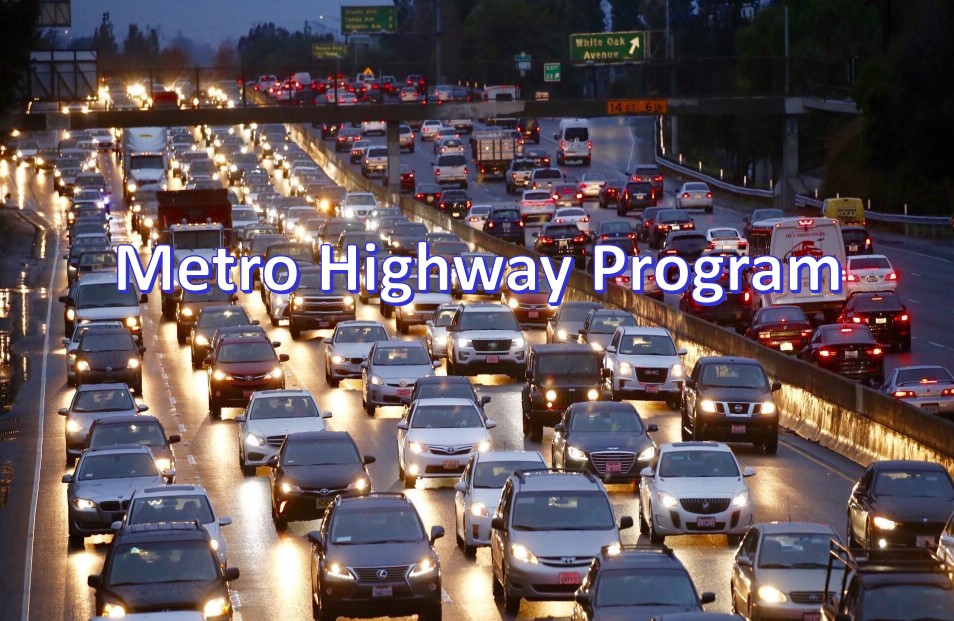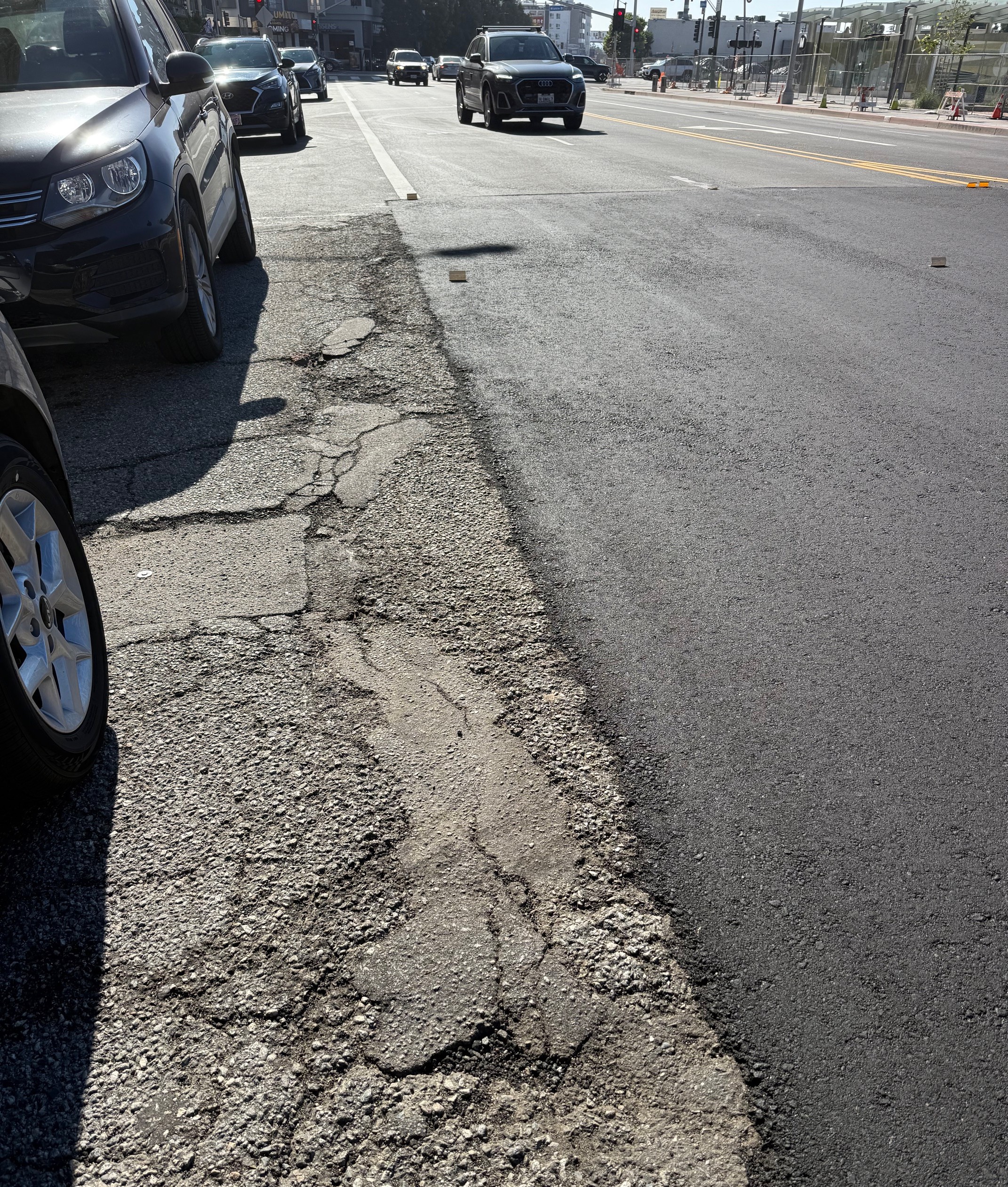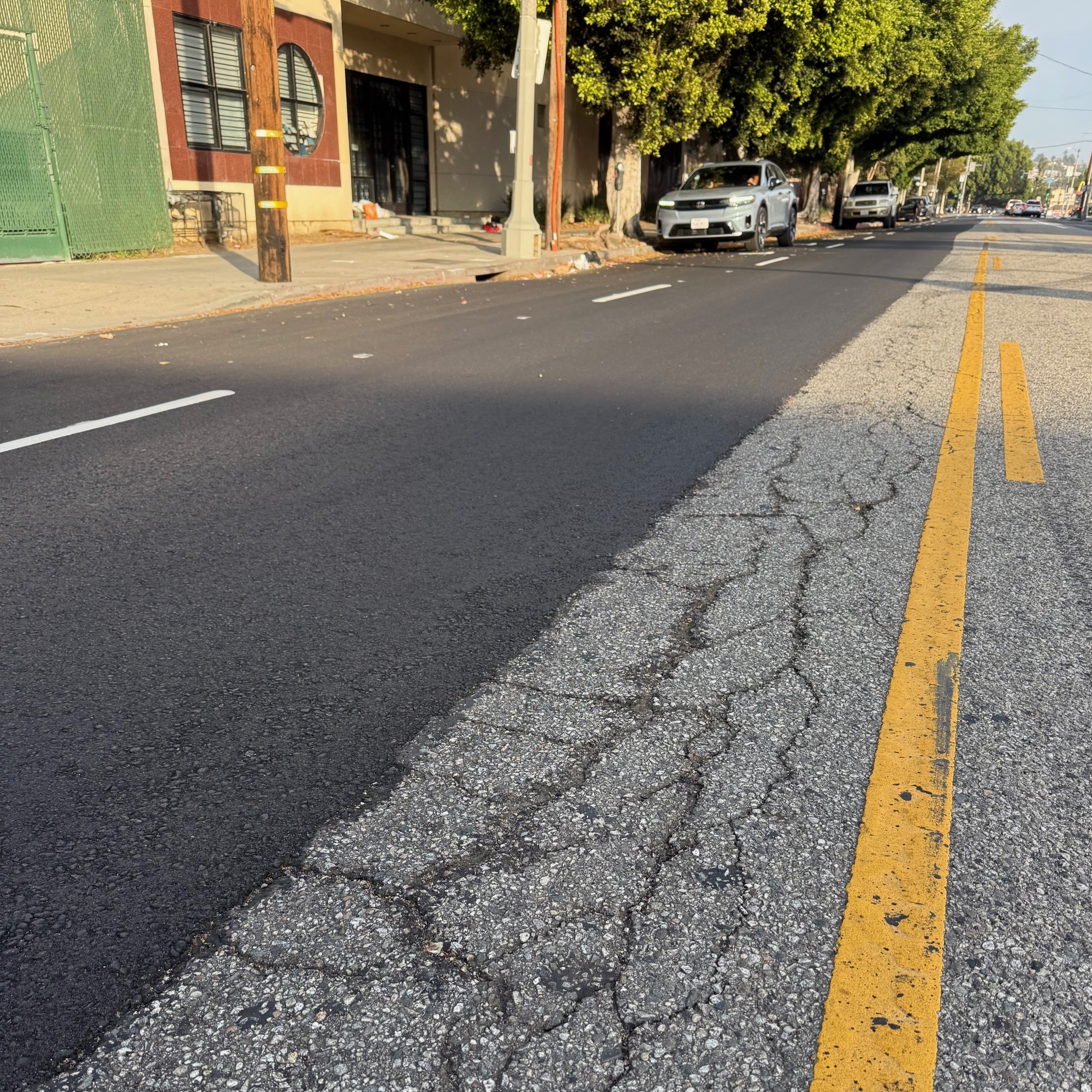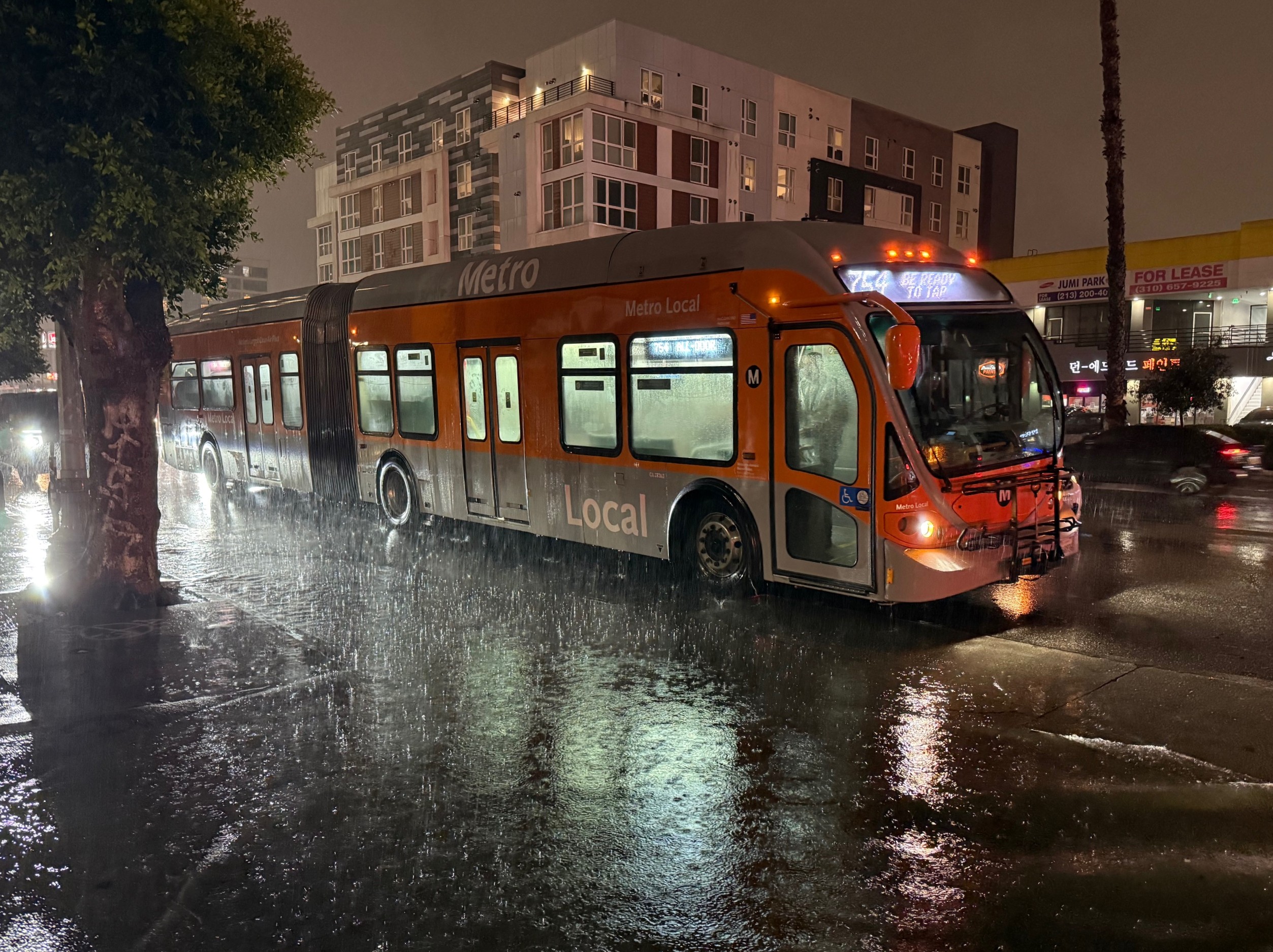Content warning: this one is wonky. It's a sad tale, involving intricacies of state environmental law, and how agencies and departments - namely Metro and Caltrans - bypass environmental regulations in order to keep on widening freeways, so more drivers can pollute already-pollution-burdened communities.
What is an Auxiliary Lane?
Caltrans defines an Auxiliary Lane as "An outer lane on the right side of a freeway that begins at an on-ramp and ends at the following off-ramp." Metro defines auxiliary lanes as "outside lanes extending between an on-ramp and a subsequent off-ramp."
Below is a Federal Highway Administration diagram that shows configurations before and after an aux lane is added to a highway.
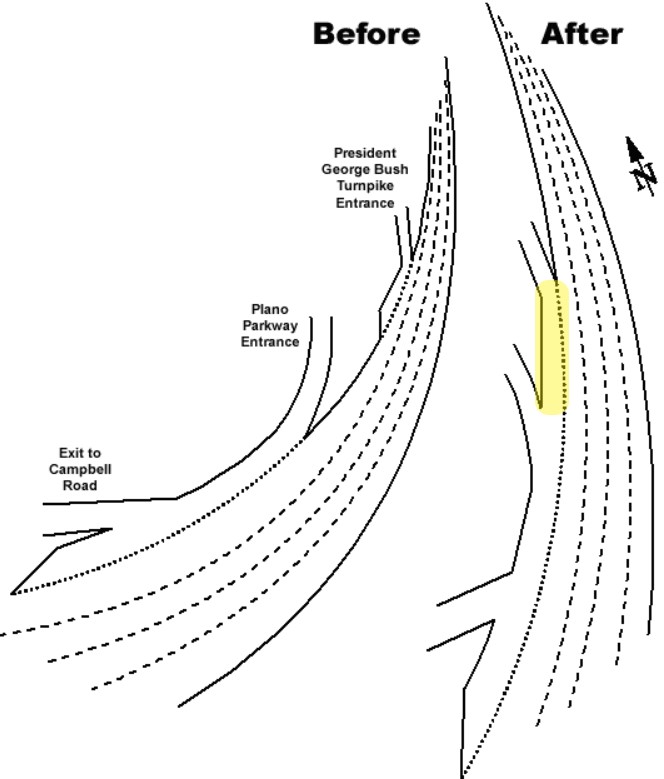
In theory, adding an aux lane doesn't increase through-traffic movement (FHWA), because the lane is off to the side, so the main stem of the highway itself doesn't increase capacity. In practice, adding an extra lane - aux lane or not - increases capacity, induces more driving, and can be a step toward further and further widening.
Highway widening proponents tend to assert that aux lanes are not full-on freeway widening - more like adding a shoulder. (Aux lanes are not shoulders, though; they have shoulders alongside them.) These proponents often claim aux lane projects are not about increasing capacity, but are merely needed for safety (generally for safer merging). For example, Caltrans and Metro claim that adding another lane to the 91 Freeway in North Long Beach "is not increasing capacity... the primary purpose of the addition of an auxiliary lane is to improve safety, traffic operations, and not to increase capacity." (More on that project below.)
California's Auxiliary Lanes Loophole
When California reformed its CEQA (California Environmental Quality Act) process in late 2018 - a change that largely shifted environmental analyses from measuring Level of Service (LOS) to estimating new Vehicle Miles Traveled (VMT) - it included a legal loophole that allows many aux lane projects to bypass full environmental review.
State regulations now generally mandate that transportation projects evaluate increased driving (increased VMT) they induce. Except that does not apply to short aux lanes.
The rules exempt "projects that would not likely lead to a substantial or measurable increase in vehicle travel," specifically including:
addition of an auxiliary lane of less than one mile in length designed to improve roadway safety.
For short aux lane projects, instead of completing a full environmental impact report (EIR), agencies are allowed to do an abbreviated process, typically a "categorical exemption" (CE), "notice of exemption" (NOE), or a Finding of No Significant Impact (FONSI).
Instead of spending a couple years holding meetings and gathering public comment - which Metro does for bus, rail, and bike projects - aux lane projects often get one public scoping meeting at the outset. Then Caltrans studies and designs the project, filing a CE or FONSI notice (sometimes as short as 1-3 pages) with the state.
You may be thinking, it's just a tiny project less than a mile long, what's the big deal?
There are two caveats.
First, not all aux lane projects are small. Metro and Caltrans are bundling together multiple short aux lanes into longer projects, especially on the 405 Freeway. One Caltrans/Metro South Bay 405 widening project combines seven short segments, totaling over five miles. That project's environmental clearance: just a 12-page NOE. (More on that project below.) Another Caltrans/Metro 405 project combines five short widenings totaling just over four miles.
(Streetsblog raised concerns about Metro piecemealing several miles of expansion by breaking it into numerous short segments. The Texas Department of Transportation was sued for splitting large expansions into small FONSI segments. But that's another story.)
Second, skipping the full environmental review means projects get to avoid "VMT mitigation," another even wonkier topic. Basically, state environmental regulations require projects that increase driving to offset that driving somehow, usually by also including components that support transit, walking, and/or bicycling. When Metro uses the aux lane loophole to bypass the full environmental process, the project is also not required to include effective multimodal components.
Using the aux lane loophole allows Caltrans and Metro to bypass public input (including not releasing project information publicly) and bypass requirements for mitigating project harms. So Caltrans and Metro are using the loophole a lot. They are currently planning and/or building about twenty aux lane segments, each one shorter than a mile.
The state's loophole results in unmitigated, environmentally harmful projects with little public process. This is bad enough; the state should end this harmful practice. But, for now, it is legal.
Unfortunately Caltrans and Metro are also quietly using the aux lane loophole inappropriately, and probably illegally. The freeway agencies are using the loophole to bypass full environmental processes on projects that aren't just aux lanes, but also on projects that widen the mainstem of freeways.
Caltrans and Metro claim auxiliary lane exemption for 405 and 91 projects that aren't auxiliary lanes
Streetsblog has come across two instances where Metro and Caltrans call their projects aux lanes - declaring "no significant impacts" and bypassing public processes and mitigation - but the projects include full-on freeway mainstem widening, not just aux lanes.

Metro is planning to spend an estimated $120+ million to add more lanes to the 405 Freeway between the 105 Freeway and Artesia Boulevard - through the cities of Hawthorne, Lawndale, Redondo Beach, and Torrance. In June, Metro approved $40 million for the project, announcing it would seek additional state and federal grant funding.
The project includes just over five miles of new freeway lanes. That should have triggered a full environmental review, right? Well, no. In 2020, Caltrans filed a twelve-page Notice of Exemption declaring the project "categorically exempt" because it has "No significant impacts on the environment."
Caltrans/Metro titled the project "Interstate 405 Auxiliary Lanes Improvement Project" and break the five miles up into seven short segments, each short of one mile long.
But one of those segments is not an aux lane: the lane from the 105 Freeway connector to south of the Rosecrans Avenue exit at Hindry Avenue.
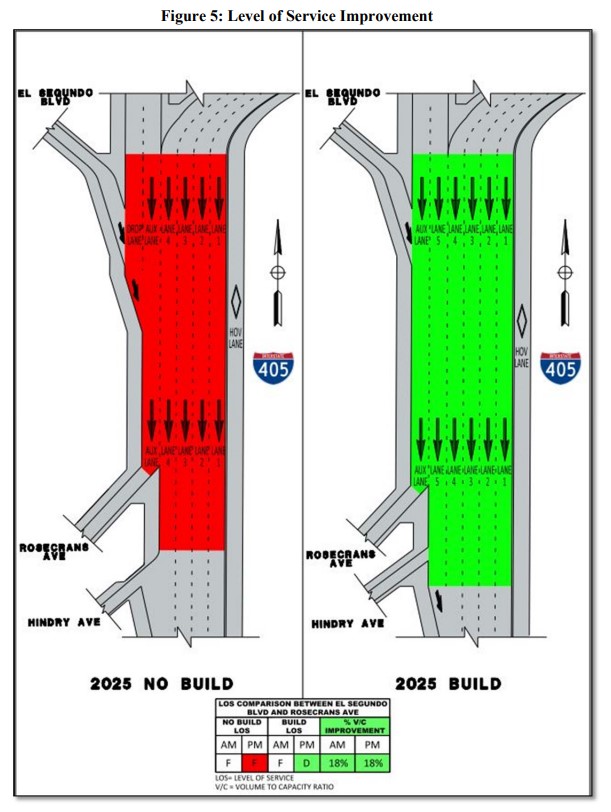

The project NOE even lists that segment as a "lane extension" while terming the other segments "auxiliary lanes."
This is a mainline widening - beyond just aux lanes. Under state law, this project should have a full environmental review, and should be required to mitigate for induced driving due to mainstem capacity expansion.
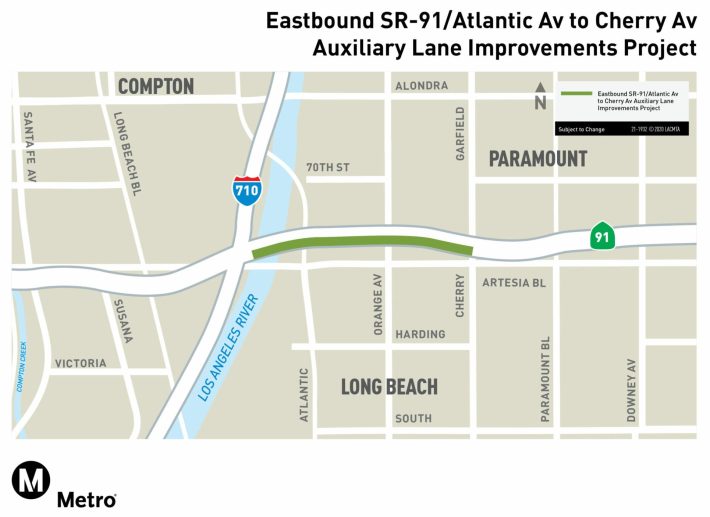
Metro is spending more than $220 million to add one more eastbound lane for about one mile of the 91 Freeway in North Long Beach. Metro calls the project "Atlantic Avenue to Cherry Avenue Auxiliary Lane Improvements," but it is neither. It's not just an aux lane. And about a quarter of the project is not located between those ramps.
Last month Metro approved $174 million for this project, which supplements a September approval of $65 million for this project and another 91 Freeway expansion.
Caltrans approved this widening via a Finding of No Significant Impact (FONSI) back in 2021. The FONSI asserts that the project is an "auxiliary lane to improve safety, traffic operations, and not to increase capacity."
Again, the project is more than an aux lane, adding capacity that extends past ramps. This project increases the capacity of the main stem of the 91.
The diagrams for the 91 aren't as helpful as the 405 project, but here goes.
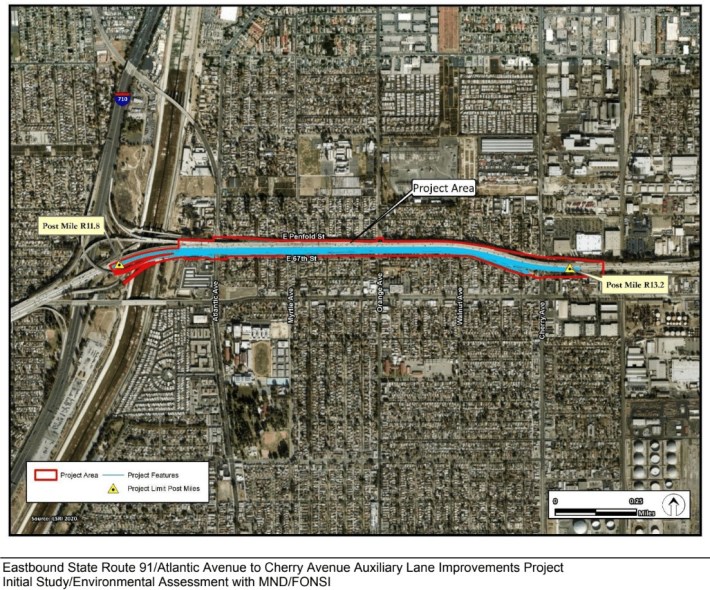
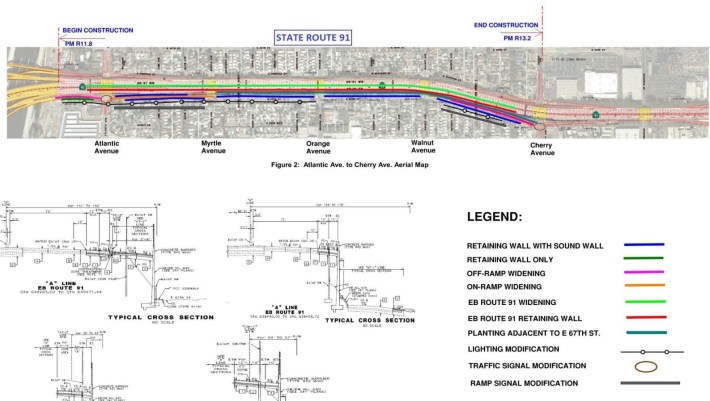
The project includes a ~5,000 foot (~0.96 mile) eastbound auxiliary lane, which appears tailored to barely make it under the one-mile loophole limit. But there's more: the widening crosses Atlantic Avenue's on- and off-ramps, meaning that by definition it is not just an auxiliary lane.
This is a mainstem widening - beyond just aux lanes. This project should have a full environmental review, and should be required to mitigate for induced driving due to freeway capacity expansion.
How do you solve a problem like mass freeway expansions done under false pretense?
The only thing that seems to get Metro and Caltrans to reconsider widespread freeway expansion is decades of community resistance, as was the case with agencies reluctantly canceling mega-widening projects planned on the lower 710 and the north 710.
Short of that needed community organizing work, it might take eagle-eyed community groups spotting these sorts of deceptive practices, which are buried in Metro/Caltrans documents that are often only obtainable via California Public Records Act requests, then going to court to get Caltrans and Metro to re-do their environmental analyses.
State legislators could approve legislation revising CEQA procedures to close freeway-permissive loopholes. A sincere CEQA environmental process should find that adding more and more and more lanes to freeways really does adversely impact the environment, which, at bare minimum, should be mitigated. But Metro is pushing to go the other way, proposing that various widenings - aux lanes longer than a mile, adding truck lanes, widening ramps - should not require mitigation. Really.
Or Metro and Caltans could listen to their own equity and environmental lip service, and truly rethink widespread freeway capacity expansion. Don't hold your breath.
